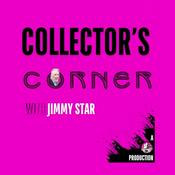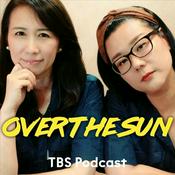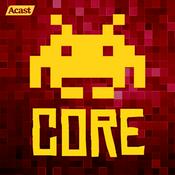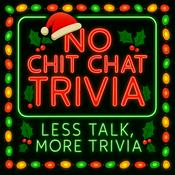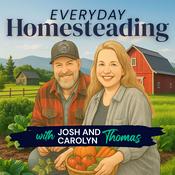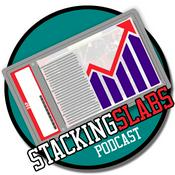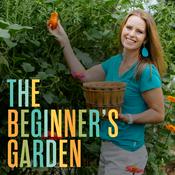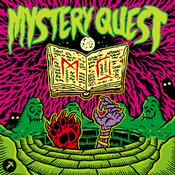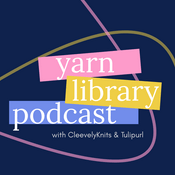318 episodes

Seed Catalog Season - Ep. 280
12/16/2025 | 28 mins.
Seed catalog season is fun, but it can also be overwhelming. If you’ve ever ordered way more seed than you can possibly plant, chosen a variety that just did not perform in your climate, or gotten confused by all the codes, abbreviations, and marketing language this episode is for you.Today on Just Grow Something we’re going to talk about how to read a seed catalog.We’ll cover:1. Why seed catalogs are tools, not just wish books2. The key pieces of information in a catalog listing (and what they actually mean)3. Days to maturity, and why that number is not as simple as it looks... and moreBy the end, you’ll be able to flip through a catalog and quickly decide, “Yes, this variety makes sense for my garden” or “Nope, that’s just clever marketing” and make a wish list that can actually be fulfilled.Let’s dig in.Resources:1. Washington State University Extension. Tips to Making Strategic Vegetable Seed Selections (EM057E), 2025: https://wpcdn.web.wsu.edu/wp-extension/uploads/sites/2073/2025/01/Vegetable-Seed-Selection.pdf2. Oregon State University Extension. “How to Read Seed Packets Before You Buy.”: https://extension.oregonstate.edu/news/how-read-seed-packets-you-buyJust Grow Something: https://justgrowsomething.comJust Grow Something Merch and Downloads: https://justgrowsomething.com/shopJust Grow Something Gardening Friends Facebook Group: https://www.facebook.com/share/g/18YgHveF5P/ Check out how you can become a patron on Patreon: https://www.patreon.com/JustGrowSomethingBonus content for supporters of the Podcast: https://buymeacoffee.com/justgrowsomethingAmazon storefront: https://www.amazon.com/shop/justgrowsomething

Winter Sowing 101 - Ep. 279
12/09/2025 | 31 mins.
Winter sowing is a seed-starting method that sounds a little bit wild the first time you hear it but makes sense if you think about it from a horticultural standpoint. Basically you are sowing seeds in recycled containers like milk jugs and placing them outside in the winter as a very hands-off way of starting your spring garden.If you’ve ever:• Run out of space under grow lights• Been frustrated by leggy indoor seedlings• Or just felt like you don’t have the time or money or inclination for a full seed-starting setup…winter sowing might be your new favorite technique.Let's dig in!References and Resources:University of Missouri Extension. Winter Sowing Seeds (YM105), 2021. https://extension.missouri.edu/publications/ym105Rutgers NJAES Cooperative Extension. “Winter Seed Sowing Handout.” 2023. https://ocean.njaes.rutgers.edu/wp-content/uploads/2024/01/Winter-Seed-Sowing-Handout-Final.pdfJust Grow Something: https://justgrowsomething.comJust Grow Something Merch and Downloads: https://justgrowsomething.com/shopJust Grow Something Gardening Friends Facebook Group: https://www.facebook.com/share/g/18YgHveF5P/ Check out how you can become a patron on Patreon: https://www.patreon.com/JustGrowSomethingBonus content for supporters of the Podcast: https://buymeacoffee.com/justgrowsomethingAmazon storefront: https://www.amazon.com/shop/justgrowsomething

Indoor Greens and Herbs for the Winter - Ep. 278
12/02/2025 | 31 mins.
When the garden beds are frozen, the days are short, and you’re staring at bags of store-bought salad mix, it can feel like fresh homegrown food is a long way off. But it doesn’t have to be.Today on Just Grow Something we’re talking about growing herbs and leafy greens indoors in winter—on a windowsill, under a simple grow light, or with one of those countertop indoor garden systemsIf you’ve ever thought:• “I’d love fresh basil in January.”• “My house is too dark to grow anything.”• Or, “Are those indoor garden gadgets actually worth it?”This episode is for you. Let's dig in.References and Resources:How Do We Measure Light: https://gardeningsolutions.ifas.ufl.edu/plants/houseplants/light-for-houseplants/University of Minnesota Extension. “Growing Herbs Inside is Easy and Healthy.” 2022. https://extension.umn.edu/news/growing-herbs-inside-easy-and-healthyPenn State Extension. “A Step-By-Step Guide for Growing Microgreens at Home.” 2023. https://extension.psu.edu/a-step-by-step-guide-for-growing-microgreens-at-homeJust Grow Something: https://justgrowsomething.comJust Grow Something Merch and Downloads: https://justgrowsomething.com/shopJust Grow Something Gardening Friends Facebook Group: https://www.facebook.com/share/g/18YgHveF5P/ Check out how you can become a patron on Patreon: https://www.patreon.com/JustGrowSomethingBonus content for supporters of the Podcast: https://buymeacoffee.com/justgrowsomethingAmazon storefront: https://www.amazon.com/shop/justgrowsomething

How to Prepare for Seed Season: Reflection, Inventory, and Smarter Ordering - Ep. 277
11/25/2025 | 30 mins.
Prepare for seed season with practical tips on reviewing your garden's performance, taking seed inventory, and ordering smarter for a more successful growing year.Today on Just Grow Something we walk through the essential steps to get ready for seed season: how to reflect on what worked (and didn't) in your garden, take a proper seed inventory, and create a more intentional seed order when the flood of catalogs leads to plant-filled daydreams. Whether you're planning next year's layout or just trying to avoid overbuying, this episode gives you the tools to start strong. Let's dig in!References and Resources:Downloadable chart for what each plant yields on average: https://justgrowsomethingpodcast.com/yieldOrdering seeds from garden catalogs | Over the Garden Fence | Illinois Extension | UIUC: https://extension.illinois.edu/blogs/over-garden-fence/2021-01-04-ordering-seeds-garden-catalogsSeed Storage Protocols : USDA ARS: https://www.ars.usda.gov/plains-area/fort-collins-co/center-for-agricultural-resources-research/paagrpru/docs/seed-program/seed-storage-protocols/Just Grow Something: https://justgrowsomething.comJust Grow Something Merch and Downloads: https://justgrowsomething.com/shopJust Grow Something Gardening Friends Facebook Group: https://www.facebook.com/share/g/18YgHveF5P/ Check out how you can become a patron on Patreon: https://www.patreon.com/JustGrowSomethingBonus content for supporters of the Podcast: https://buymeacoffee.com/justgrowsomethingAmazon storefront: https://www.amazon.com/shop/justgrowsomething

Essential Fall Garden Clean Up - Ep. 276
11/18/2025 | 27 mins.
Today we’re talking about one of my least favorite but probably most important fall garden rituals: the great garden clean-up. This is the part of the year where we get to close one chapter of the garden season and start quietly writing the next chapter.Now that most of the chaos of the garden is done, it's time to be putting things in order, protecting the soil, and setting yourself up for success next spring.So, today on Just Grow Something we’re talking about:• What to remove and what to leave in your garden beds• How to handle diseased or pest-infested plant material• Best practices for soil testing, amending, and protecting your beds over winter• And a few tips for the gardeners who have really just had it for now and don’t want to completely clear everything out in this moment. Because I feel you.Let’s dig in!Resources:How to Amend the Soil in Fall for a Better Garden in Spring - Ep. 222: https://justgrowsomethingpodcast.com/episode/how-to-amend-the-soil-in-fall-for-a-better-garden-in-spring-ep-222Getting Started with Cover Crops - Ep. 166: https://justgrowsomethingpodcast.com/episode/getting-started-with-cover-crops-ep-166Just Grow Something Merch and Downloads: https://justgrowsomething.com/shopJust Grow Something Gardening Friends Facebook Group: https://www.facebook.com/share/g/18YgHveF5P/ Check out how you can become a patron on Patreon: https://www.patreon.com/JustGrowSomethingBonus content for supporters of the Podcast: https://buymeacoffee.com/justgrowsomethingAmazon storefront: https://www.amazon.com/shop/justgrowsomething
More Leisure podcasts
Trending Leisure podcasts
About Just Grow Something | Evidence-Based Home Gardening
Listen to Just Grow Something | Evidence-Based Home Gardening, Kinda Funny Games Daily: Video Games News Podcast and many other podcasts from around the world with the radio.net app
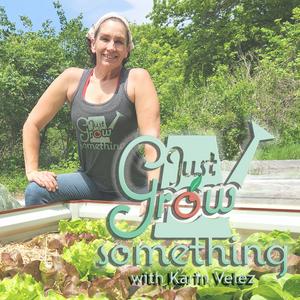
Get the free radio.net app
- Stations and podcasts to bookmark
- Stream via Wi-Fi or Bluetooth
- Supports Carplay & Android Auto
- Many other app features
Get the free radio.net app
- Stations and podcasts to bookmark
- Stream via Wi-Fi or Bluetooth
- Supports Carplay & Android Auto
- Many other app features


Just Grow Something | Evidence-Based Home Gardening
download the app,
start listening.








